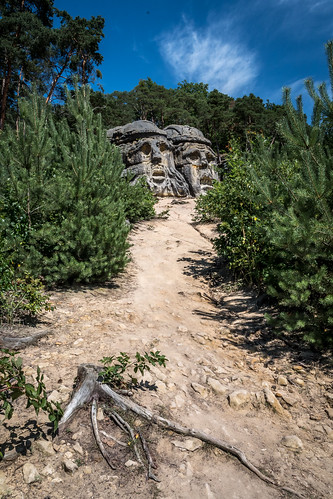however, NLRP3-mutant cells show impaired redox homeostasis associated with rapid secretion of IL-1,45 whereas sJIA monocytes do not.27 Monocytes from both disease groups are resistant to enhancement by ATP of lipopolysaccharide-stimulated IL-1 secretion in vitro, but probably for different reasons. The occurrence of a clinical response to IL-1 inhibition, despite the absence of excess IL-1 secretion by sJIA blood monocytes in vitro, suggests that increased IL-1 activity in vivo might involve other cell types, privileged sites, or different triggers or pathways, and some evidence supports these possibilities. IL-1 levels in synovial fluid are higher in active sJIA than in active polyarticular JIA, whereas levels in circulating plasma are lower in sJIA.46 Pathways other than the caspase-1 – inflammasome pathway that is shown in NIH-PA Author Manuscript NIH-PA Author Manuscript NIH-PA Author Manuscript Nat Rev Rheumatol. Author manuscript; available in PMC 2014 October 01. Mellins et al. Page 6 but not all, reports, IL-6 is spontaneously released in vitro from circulating immune cells in sJIA,55,56 although this phenotype is not unique to sJIA.57 Importantly, neutralizing IL-6 with tocilizumab in sJIA led to clinical improvement in preliminary studies.58,59 Positive response to this therapy is associated with the upregulation of cartilage oligometric matrix protein, a marker of growth cartilage, supporting a role for IL-6 in growth impairment in sJIA.60 Another consequence of elevated IL-6 in active sJIA is modulation of levels of proteases and their regulators.6164 Presumably as a consequence of these changes, novel fragments of various proteins can be detected in plasma39 and urine63 during flare; these peptides might provide a novel source of sJIA biomarkers. sJIA as a defect of Immunoregulation Anti-inflammatory responses are also stimulated in active sJIA, presumably in an attempt to quell inflammation. In untreated early disease, PBMCs show increases in transcripts for negative regulators of innate immune responses, such as IL1RN and SOCS3, which is induced by IL-1 and IL-6 and inhibits their signaling pathways.30,34 Additional anti-inflammatory pathways are detected during sJIA, as discussed below. It  seems that none are sufficient to resolve the inflammation in sJIA. The exception might be disease resolution in monocyclic sJIA but this possibility has not been investigated. IL10–Expression of the immunoregulatory cytokine IL-10 is detectable during active disease. IL-10 mediates a broad range of anti-inflammatory action with effects on both innate and adaptive immune responses. The IL10 allele associated with sJIA is a `low expressor’,21,22 and average levels of IL-10 in plasma and synovial fluid during active disease, although elevated compared with inactive disease, are lower than levels in active poly articular JIA.46,65 These results have suggested that the anti-inflammatory IL-10 response is deficient in sJIA. One downstream effect of IL-10 is induction of the enzyme heme oxygenase 1, which mediates anti-inflammatory effects through its products. Serum levels of HO-1 in sJIA correlate with erythrocyte sedimentation rate.66 Alternatively activated monocyte/macrophages–The monocyte/macrophage lineage is strikingly plastic in PubMed ID:http://www.ncbi.nlm.nih.gov/pubmed/19846406 response to environmental cues and undergoes different forms of polarized activation. `HC-067047 Classically activated’ M1 macrophages are highly proinflammatory, whereas `alternatively activated’ M2 macrophages fi
seems that none are sufficient to resolve the inflammation in sJIA. The exception might be disease resolution in monocyclic sJIA but this possibility has not been investigated. IL10–Expression of the immunoregulatory cytokine IL-10 is detectable during active disease. IL-10 mediates a broad range of anti-inflammatory action with effects on both innate and adaptive immune responses. The IL10 allele associated with sJIA is a `low expressor’,21,22 and average levels of IL-10 in plasma and synovial fluid during active disease, although elevated compared with inactive disease, are lower than levels in active poly articular JIA.46,65 These results have suggested that the anti-inflammatory IL-10 response is deficient in sJIA. One downstream effect of IL-10 is induction of the enzyme heme oxygenase 1, which mediates anti-inflammatory effects through its products. Serum levels of HO-1 in sJIA correlate with erythrocyte sedimentation rate.66 Alternatively activated monocyte/macrophages–The monocyte/macrophage lineage is strikingly plastic in PubMed ID:http://www.ncbi.nlm.nih.gov/pubmed/19846406 response to environmental cues and undergoes different forms of polarized activation. `HC-067047 Classically activated’ M1 macrophages are highly proinflammatory, whereas `alternatively activated’ M2 macrophages fi
Interleukin Related interleukin-related.com
Just another WordPress site
